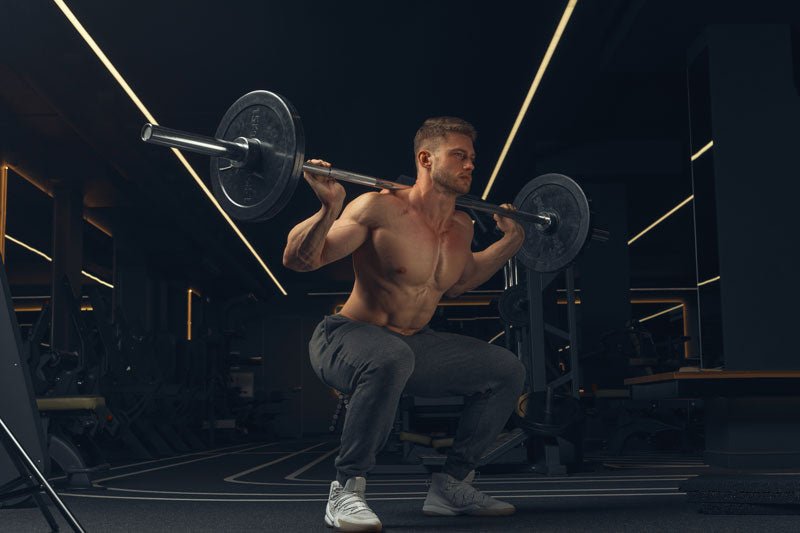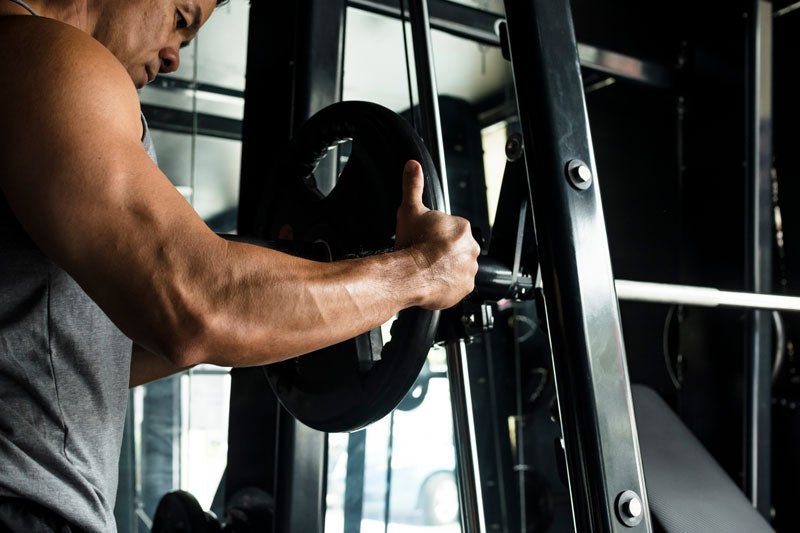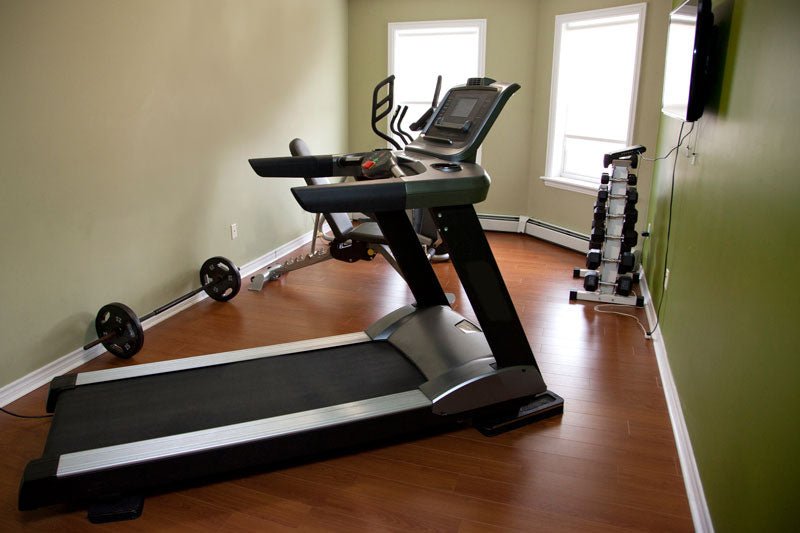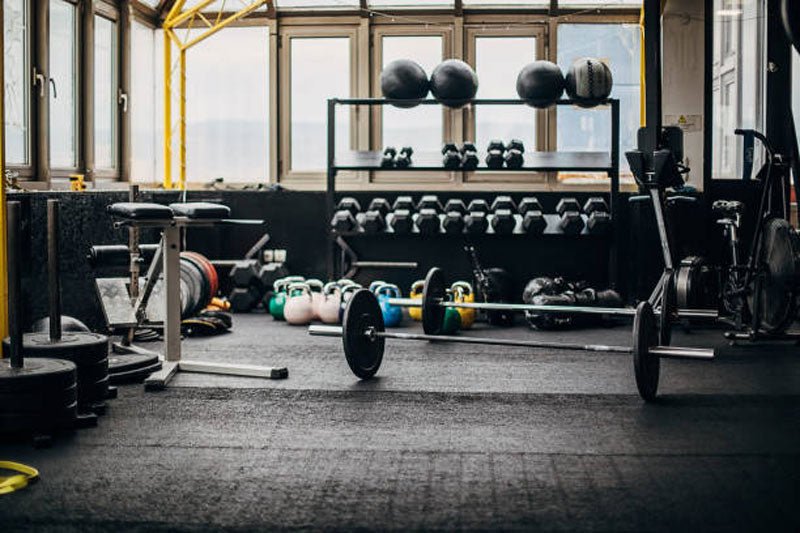Bumper Plates vs Cast Iron: Which Weight Plates Are Right for You?

When you're building out a home gym or outfitting a commercial training space, choosing the right weight plates is a crucial decision. Among the most popular and debated options are bumper plates and cast iron plates. While both serve the same purpose—to load a barbell and help you build strength—they offer very different experiences when it comes to feel, functionality, noise, and durability. So how do you choose which type of weight plate is right for your goals and space?
Comparing Bumper Plates and Cast Iron Plates
Bumper plates are made entirely of dense rubber, usually with a steel insert at the center to slide onto a barbell. Their defining characteristic is that they are all the same diameter, regardless of weight. That means a 10 lb plate is just as wide as a 45 lb plate, which helps protect the bar and your flooring by distributing the force more evenly when dropped. This design makes bumper plates especially useful for Olympic lifts and high-intensity workouts where the barbell might be dropped from overhead or shoulder height.
Cast iron plates, by contrast, are made of solid metal and come in varying diameters depending on weight. They are thinner than bumper plates, which allows you to fit more weight on a barbell. This is particularly useful for powerlifters and strength athletes pushing higher numbers. Iron plates are often the go-to in traditional gyms for heavy strength training due to their slim profile and classic feel.
Noise, Durability, and Use Case
Bumper plates excel at reducing noise and protecting equipment. Dropping a loaded barbell with cast iron plates onto a concrete floor can damage both the plates and the floor, not to mention your ears. Bumper plates absorb impact and reduce bounce, making them safer and quieter for most home gyms. They’re also less likely to chip or crack if used correctly on appropriate flooring.
That said, not all bumper plates are created equal. There are various types, including crumb rubber plates, which are made from recycled materials and tend to have more bounce, and competition bumper plates, which are precision-calibrated and designed for minimal bounce and high durability. For most users, a standard rubber bumper plate is an excellent balance of affordability, performance, and safety. Fray Fitness offers a range of bumper plates that suit all types of training environments.
Efficiency, Weight Capacity, and Longevity
Iron plates, while louder and less forgiving when dropped, offer undeniable benefits for lifters chasing heavier loads. Because they take up less space on a barbell sleeve, loading more weight is easier, especially useful for deadlifts and squats. They also tend to be less expensive per pound, making them an economical choice for building a full set of weights. Over time, however, iron plates can rust if not properly stored or maintained, and they can chip or dent floors without protective mats.
One approach many lifters take is to combine both types. For example, using bumper plates for the first 135 lbs (two 45s) provides cushioning and safety for deadlifts or cleans, while adding cast iron plates beyond that maximizes the load you can carry without sacrificing bar space. This hybrid setup gives you the best of both worlds: floor protection, noise reduction, and capacity for heavy training.
Space, Training Style, and Aesthetic Preferences
Choosing the right plate also comes down to the kind of lifting you do most often. If you’re into Olympic lifting, functional fitness, or high-rep training where the barbell might be dropped frequently, bumper plates are a must. They’re built to take the abuse of repeated drops and reduce the wear on both your bar and your training space. On the other hand, if your focus is on slow, controlled lifts like bench presses, barbell rows, or back squats, iron plates will serve you well and allow for more efficient loading.
Space is another factor worth considering. Bumper plates take up more room—both on your barbell and in your storage area. If you're working with limited square footage, cast iron may be the more practical choice. Fray Fitness also offers storage solutions like plate trees and wall-mounted racks that can help you keep your space tidy regardless of which plates you choose.
It's also worth considering the aesthetics and feel of your gym. Some people love the classic clang and rugged look of cast iron plates, while others prefer the sleek design and modern appearance of colored bumper plates. Your training environment should feel motivating and align with your preferences, so this personal factor is more important than it might seem at first glance.
Quality Considerations and Final Comparison
No matter what you choose, investing in quality plates is essential for long-term performance and safety. Poorly made bumpers can warp or split over time, and low-quality iron plates might not fit snugly on a barbell sleeve. Fray Fitness's weight plate options are designed to meet the needs of serious lifters who value reliability and performance.
Bumper Plates:
-
Ideal for Olympic lifts and CrossFit-style workouts
-
Quieter and safer for home gyms
-
Better for protecting floors and barbells
-
Take up more space on the bar and in storage
Cast Iron Plates:
-
Great for powerlifting and traditional strength training
-
Allow for more weight on the bar due to a slimmer profile
-
Often more affordable per pound
-
Louder and require protective flooring
Final Thoughts
Ultimately, there's no wrong choice, only the one that best suits your needs. Whether you prefer the safety and silence of bumper plates or the raw efficiency of cast iron, Fray Fitness has the right tools to help you lift stronger, safer, and smarter.
Explore our full collection of weight plates and find the setup that aligns with your training goals.



